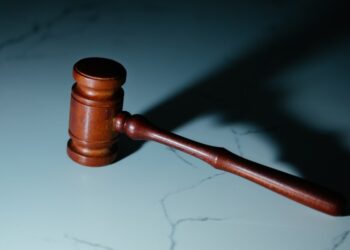Let’s be honest: accidents have the power to completely upend your life in an instant. You’re going about your day one minute, and the next you’re dealing with insurance calls, hospital costs, and the stress of trying to recover. A Personal Injury Lawyer can relieve a great deal of your burden in this situation. A competent attorney does more than only prepare documents and present arguments in court. They serve as your mentor while you’re in pain and attempting to turn your life around. Your lawyer protects you from being taken advantage of, from obtaining evidence to negotiating with uncooperative insurance companies. Having a skilled personal injury attorney on your side is not only beneficial, but it can also mean the difference between a lowball settlement and a just result that truly meets your needs. With this, we will divulge to what extent the fault of a responsible for the accident in order to claim your compensation as a victim.
How Fault Determined in Personal Injury Cases
Determining who is at fault is essential to obtaining compensation in personal injury situations. Negligence, which occurs when someone fails to behave with reasonable care and harms another, is usually the basis for fault. The harmed party must demonstrate that the responsible party violated a duty of care by being careless. In order to prove blame, a personal injury attorney can assist with the investigation and collection of evidence, including witness statements, police reports, and medical records. Compensation for victims is also influenced by the degree of fault, particularly in jurisdictions with comparative negligence.
The Concept of Negligence
When someone fails to use reasonable care and causes harm to another, that is considered negligence. Car accident lawyers define a duty of care, a breach of that duty, causation, and real harm are the four main components that are usually required to prove negligence in personal injury claims. The motorist has an obligation to obey traffic laws, for instance, in the event of an automobile accident. They have violated their obligation if they run a red light and cause an accident, which would directly hurt the other person. One of the main tasks for personal injury attorneys in establishing fault is frequently establishing negligence.
Types of Fault in Personal Injury Cases
Personal injury claims may involve strict liability, carelessness, or deliberate misconduct, among other forms of culpability. In circumstances involving product responsibility, for example, strict liability arises when one party is held accountable notwithstanding their negligence or lack of intent. When someone fails to use reasonable caution, like in an automobile accident or slip-and-fall case, it is considered negligence. Instances of intentional misbehavior include assault and battery accusations, where harm is intentionally perpetrated. Different legal strategies and differing degrees of proof are required for each form of fault.
Role of Evidence in Determining Fault
In personal injury lawsuits, determining culpability is a difficult but necessary step in ensuring victims receive justice and just recompense. Each step is essential to constructing a compelling case, whether it is demonstrating negligence, evaluating the evidence, or comprehending the subtleties of comparative or contributory responsibility. Establishing liability requires careful consideration of all relevant facts and the participation of expert witnesses. Ultimately, your chances of successfully negotiating these difficulties might be greatly increased by dealing with an experienced personal injury lawyer. You can make sure that your rights are upheld and that you get the money you are due with the correct legal assistance.










